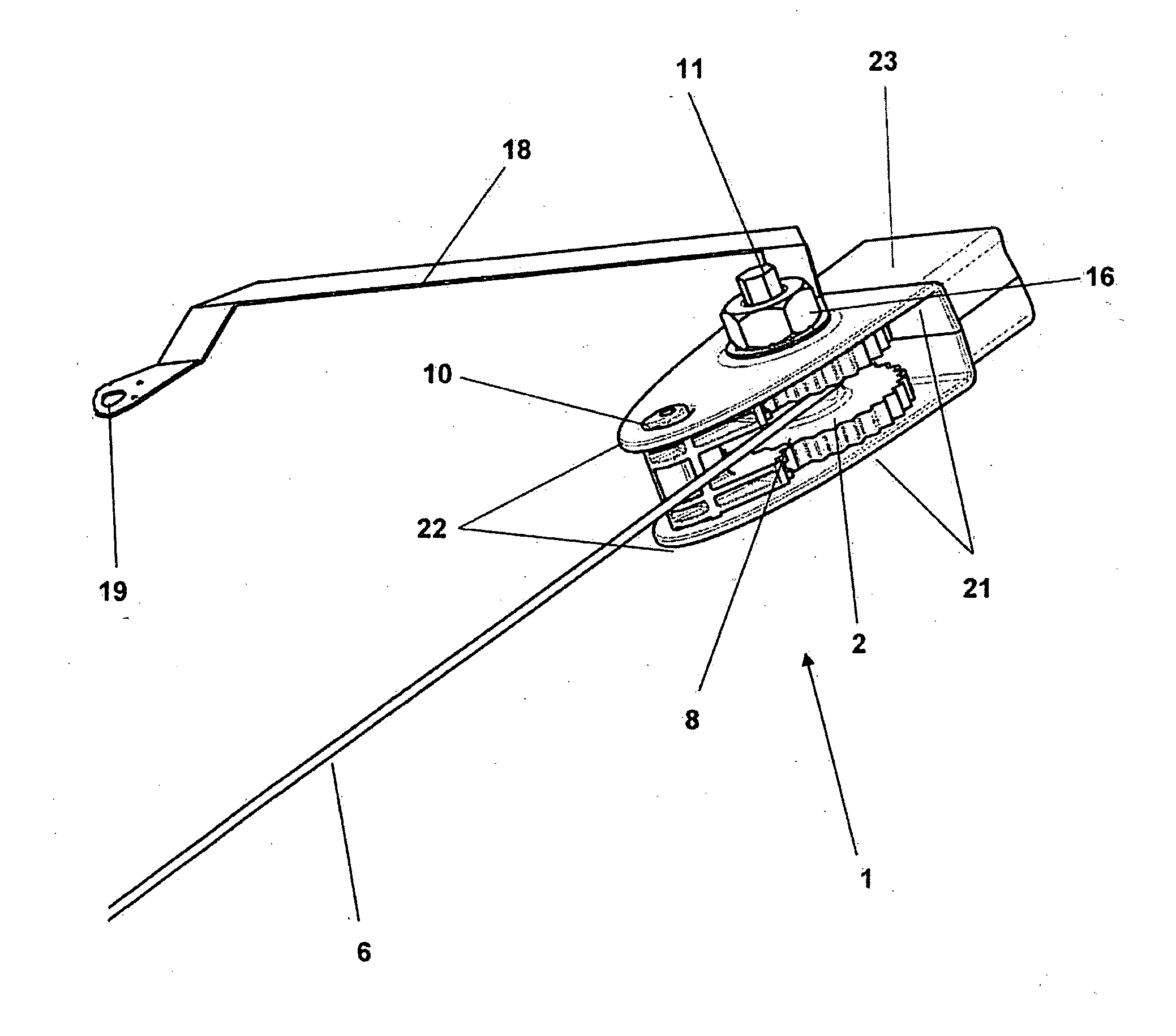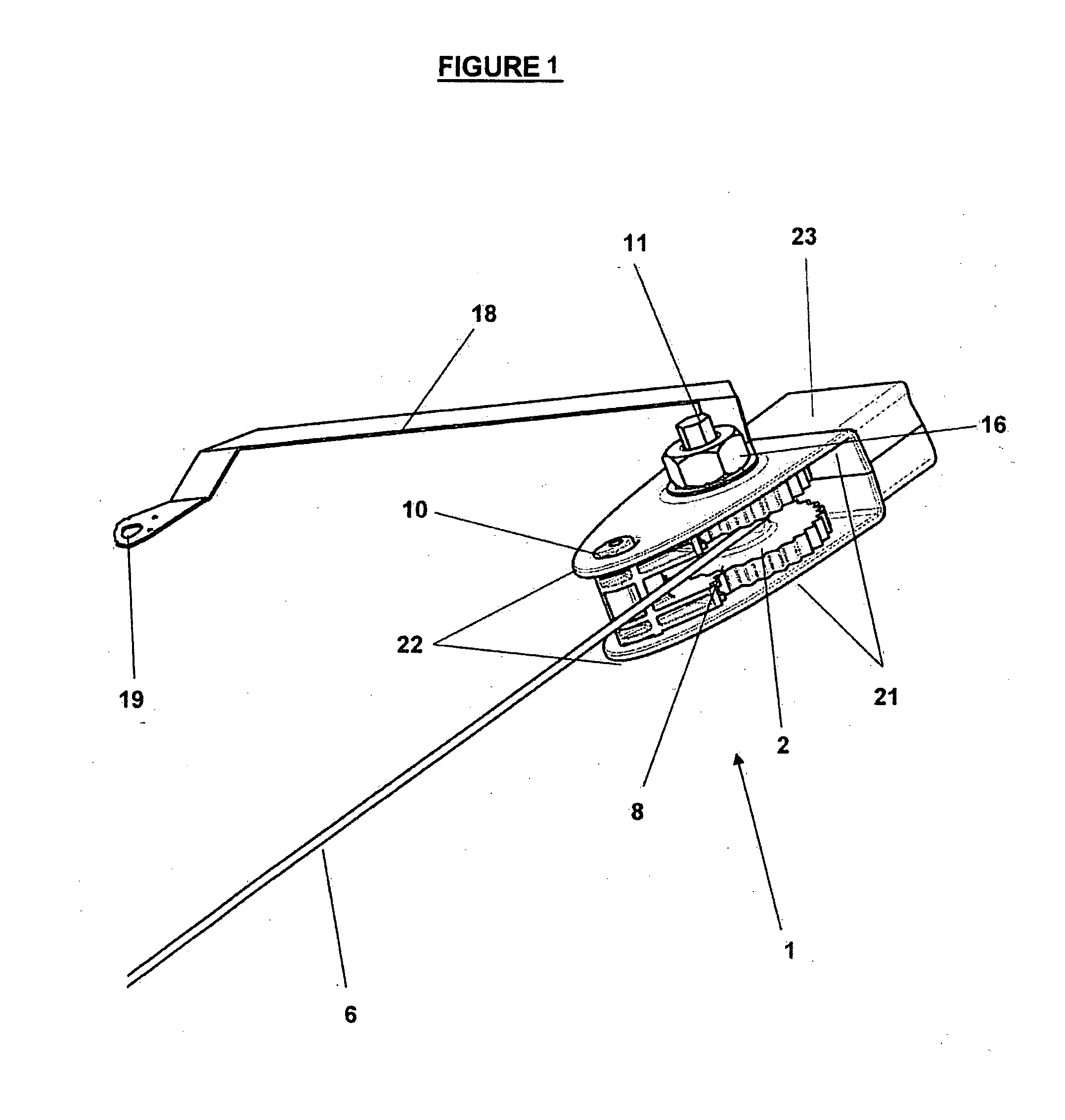Security Device and System
a technology of security device and security system, which is applied in the field of security devices, can solve the problems of unfavorable onlookers, unfavorable onlookers, and unfavorable onlookers, and dramatically affect the overall cost of fence preparation, maintenance and replacement, so as to reduce the overall cost of installation and maintenance, the cost of the system described above can be easily appreciated, and the effect of shortening the set up tim
- Summary
- Abstract
- Description
- Claims
- Application Information
AI Technical Summary
Benefits of technology
Problems solved by technology
Method used
Image
Examples
Embodiment Construction
[0033]Throughout the specification, the term strainer should be taken as meaning any apparatus used for adjusting the tension of a length of material. Substantially any form of strainer may be used with the present invention. As such, alternatives or modifications not specifically discussed in this specification should not be considered beyond the scope of the invention.
[0034]A strainer which the Applicant considers appropriate for the present invention is discussed below to provide context. The tensioning device of the strainer may be retained within a housing.
[0035]The housing may include a backing portion which is configured to be attached to a fixed object, such as a wall or fence post. The housing may also include a head portion, which preferably retains the tensioning device.
[0036]The backing portion of the housing may be a box shape. Such a shape may allow sufficient surface area to fasten the backing portion to a support. For example, the backing portion may be fastened to a...
PUM
| Property | Measurement | Unit |
|---|---|---|
| length | aaaaa | aaaaa |
| length | aaaaa | aaaaa |
| conductive | aaaaa | aaaaa |
Abstract
Description
Claims
Application Information
 Login to View More
Login to View More - R&D
- Intellectual Property
- Life Sciences
- Materials
- Tech Scout
- Unparalleled Data Quality
- Higher Quality Content
- 60% Fewer Hallucinations
Browse by: Latest US Patents, China's latest patents, Technical Efficacy Thesaurus, Application Domain, Technology Topic, Popular Technical Reports.
© 2025 PatSnap. All rights reserved.Legal|Privacy policy|Modern Slavery Act Transparency Statement|Sitemap|About US| Contact US: help@patsnap.com



